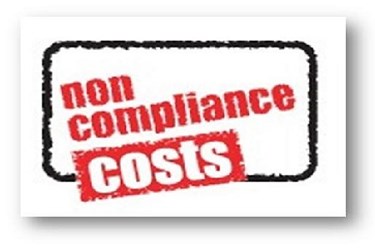FDA Publishes FSMA Non-Compliance Fees
By Laurel Maloy, contributing writer, Food Online

The FDA has published the FY2015 fee rates for domestic and foreign facilities associated with implementation of FSMA. The rates will become effective on Oct 1, 2014 and will be valid through Sept 30, 2015. Prior to the release of President Obama’s Proposed Budget Highlights for FY2015, Michael Taylor, the FDA’s Deputy Commissioner for Foods and Veterinary Medicine, testified that FSMA is not adequately funded. In Feb, while testifying before the House of Representative’s Energy and Commerce Committee, Taylor mentioned the fees that would help to fund this far-reaching, food-safety reform.
At the time, the statement seemed ambiguous and raised innumerable questions in the minds of everyone in the food supply chain. Will there be additional fees over and above what we now pay? What kind of fees? For what and why? How is this going to impact me? You can almost picture the scene in Bruce Almighty where Jim Carrey is overwhelmed when trying to organize the prayers of the world’s population. God, played by Morgan Freeman, gives Jim Carrey’s character, Bruce, the opportunity to play God, because he seems to think he can do it better. In the world of food processing, the FDA must seem to have God-like powers, striking fear into the hearts and souls of food processors everywhere.
However, the FDA and FSIS (Food Safety and Inspection Service) are staffed with people just like you and me. The agency has a budget and must operate within that budget. In order to do so, the FDA and FSIS must get creative, just as the average consumer does in his or her home. Hence, a fee-based system based upon performance, quite similar to merit-based promotions. Here’s how it works:
- The FDA estimates the average cost of a supported direct FDA work hour for FY2015 The agency must estimate every aspect of its costs for every activity for the upcoming fiscal year — travel, lodging, etc...
- The FDA estimates the full cost der direct work hour for FY2015.
Using the total funds allocated to its Office of Regulatory Affairs (ORA), the Center for Food Safety and Applied Nutrition (CFSAN), and the Center for Veterinary Medicine (CVM) the dollar amount is divided by the number of full-time equivalent (FTE) — a fancy name for a full-time employee — excluding travel costs.
- The FDA divides the first two elements above to come up with an hourly rate
- The FDA assess fees based upon the amount of time it spends on certain tasks
These tasks are the duties that take additional time as a result of non-compliance by food processors; re-inspection and recall non-compliance.
Tips For Complying With New Food Safety Regulations
The document, to be published in the Federal Register on Aug 1, 2014, uses FY2013 as a basis for figuring, as this is the most recent FY with complete data. The FY2015 projections allow for inflation and the related costs of doing business, including those costs associated with travel.
The FY2015 fee schedule:
- $217 per hour — if domestic travel is required
- $305 per hour — if foreign travel is required
The reasons for fee assessment are also clearly defined:
- Re-inspection, due to corrective action required under Section 704 of the Federal Food, Drug, and Cosmetic Act (FD&C Act)
- Non-Compliance With a Recall Order, under Sections 412(f) or 423(d) of the FD&C Act
The hours will be billed according to the fee schedule above. Bear in mind, this is an hourly rate for each FTE. For example, if three FTEs take six hours to determine compliance upon a re-inspection, a domestically-based facility will be billed for $3906.00. An invoice will be sent to the responsible party, who will then have 90 days to pay by check, bank draft, or postal money order in U.S. currency.
It stands to reason then, that the largest facilities may be paying much larger amounts than smaller facilities, simply because of the logistics involved. However fair this fee schedule seems, though, its very nature may appear to give a slap on the wrist to the biggest conglomerates, while possibly penalizing the smallest operations out of proportion to their earnings. Non-payment will be subject to the provisions under subchapter II of chapter 37 of title 31, of the United States Code.
FSMA Friday: High-Risk Food Methodology Part One
FSMA is standardizing the requirements necessary to achieve the highest level of food safety in the U.S. The relative costs to achieve a high level of food safety are high. The costs of doing business for the FDA and FSIS are high. However, the cost of the loss of a human life is incalculable.
